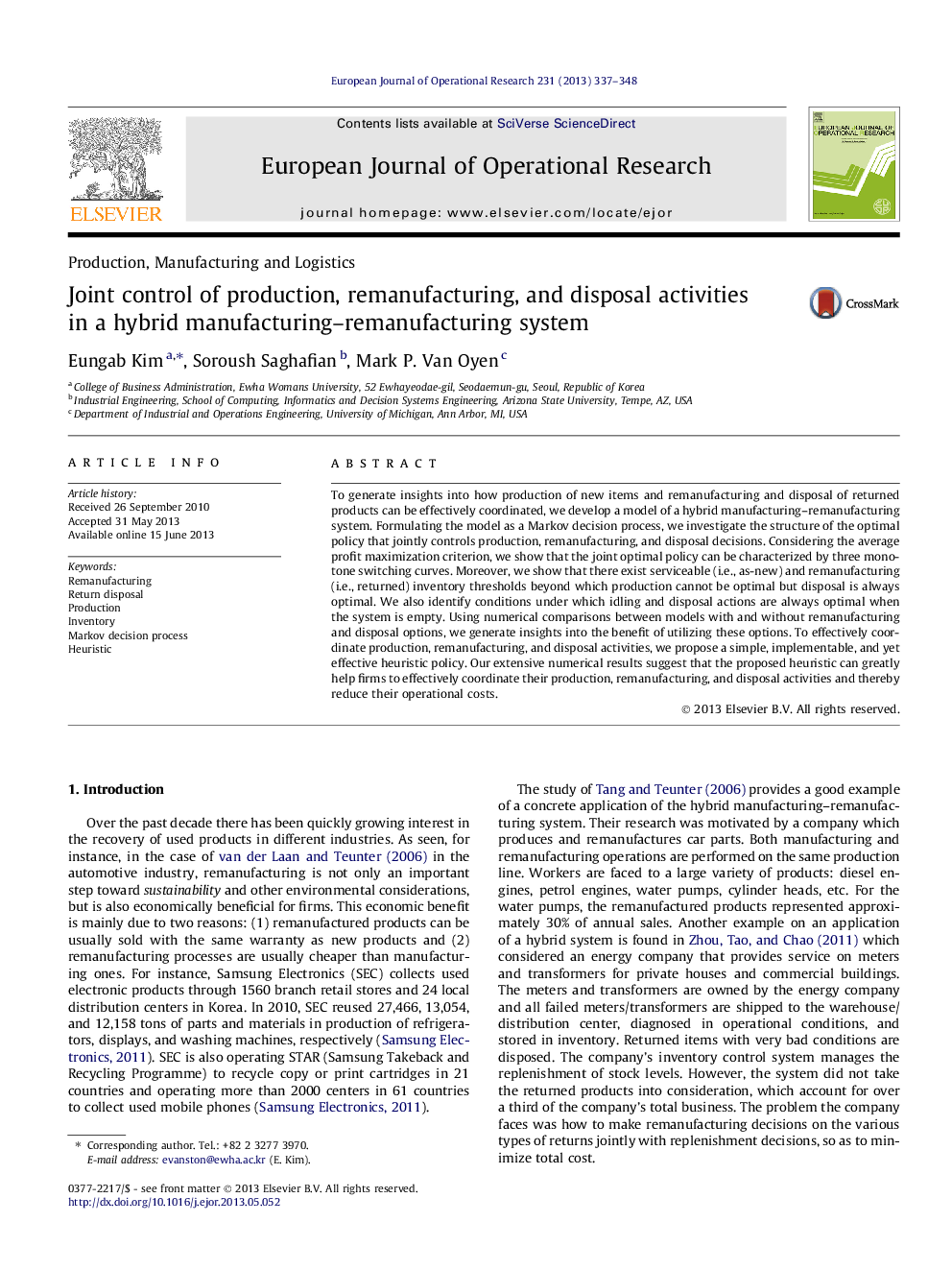| کد مقاله | کد نشریه | سال انتشار | مقاله انگلیسی | نسخه تمام متن |
|---|---|---|---|---|
| 476698 | 1446043 | 2013 | 12 صفحه PDF | دانلود رایگان |

• We study a hybrid system with manufacturing, remanufacturing, and disposal controls.
• The joint optimal policy is characterized in a continuous inventory review.
• A simple, implementable, and yet effective heuristic policy is proposed.
• We provide insights into the value of remanufacturing and disposal options.
To generate insights into how production of new items and remanufacturing and disposal of returned products can be effectively coordinated, we develop a model of a hybrid manufacturing–remanufacturing system. Formulating the model as a Markov decision process, we investigate the structure of the optimal policy that jointly controls production, remanufacturing, and disposal decisions. Considering the average profit maximization criterion, we show that the joint optimal policy can be characterized by three monotone switching curves. Moreover, we show that there exist serviceable (i.e., as-new) and remanufacturing (i.e., returned) inventory thresholds beyond which production cannot be optimal but disposal is always optimal. We also identify conditions under which idling and disposal actions are always optimal when the system is empty. Using numerical comparisons between models with and without remanufacturing and disposal options, we generate insights into the benefit of utilizing these options. To effectively coordinate production, remanufacturing, and disposal activities, we propose a simple, implementable, and yet effective heuristic policy. Our extensive numerical results suggest that the proposed heuristic can greatly help firms to effectively coordinate their production, remanufacturing, and disposal activities and thereby reduce their operational costs.
Journal: European Journal of Operational Research - Volume 231, Issue 2, 1 December 2013, Pages 337–348